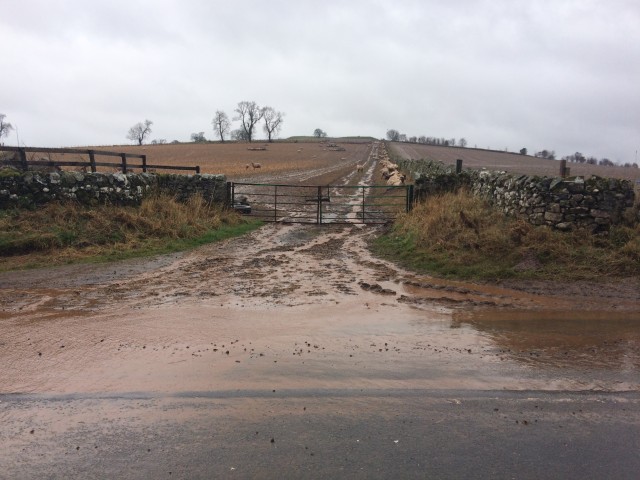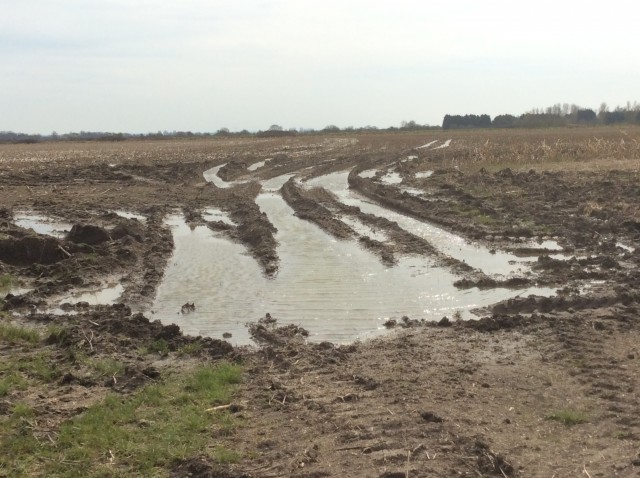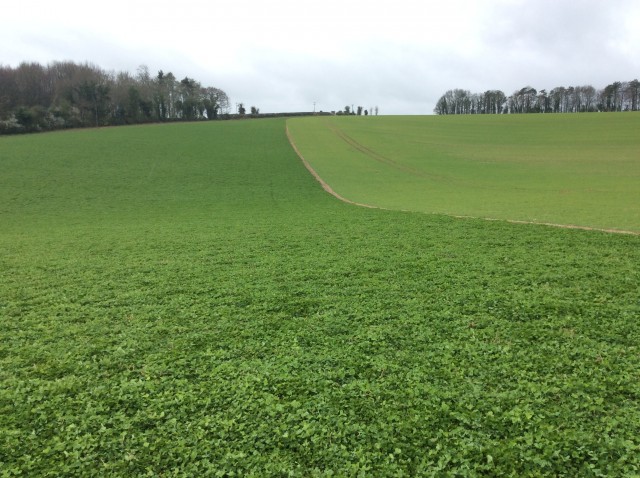The route to recovery
Over recent weeks, from growers to advisors, we have all been doing our very best when it comes to taking an optimistic view when it comes to crossing our fingers for improving weather conditions. Each break in the rain was seen as a chink of light in what has been otherwise a torrid autumn when it comes to harvesting and planting progress.
All said and done it is clear now what we are faced with - crops of maize, beet and potatoes still in the ground; farmland flooded or at best waterlogged and a significant area of land previously allocated to autumn sown crops still unplanted. The legacy most likely is that partially harvested crops will have seen seriously damaged soils on headlands and at gateways due to machinery traffic. Flooded soils will be in need of a significant period of recovery which may take upwards of a year in some cases. Unplanted land may see a window of opportunity if we get a decent period of colder, drier weather but even then the headlands and areas in field may need to be left to fully dry out.
With all this in mind, without doubt our collective number one priority is to ensure that land is planted up with crops that can be harvested next summer. Your financial, physical, mental and soil health absolutely need this to be the case!
What is clear is that we will not know how much land will be fit for spring planting so setting plans in stone now isn't going to help much. That said, it is worthwhile starting to give some consideration to the options available given that you may find all your land is fit for spring planting or alternatively have already identified areas that need another strategy.
With this in mind I have set out below some options to consider.
Information gathering
Accepting that a field or field parcel is clearly waterlogged now is one thing, but consider this - how did it perform when we had the extremely dry weather earlier in the year and over recent years in general? Can you afford for a challenging piece of land to underperform three years out of every five? Using digital tools in the field such as iSOYLscout will help you identify key areas whilst in the field. You can then add further information layers when back in the office using the MySoyl platform to layer yield, biomass, soil type and nutrient indices and give a clear fact-based view on performance.
Ask yourself 'which crop delivers the most consistent and profitable margin for me?' Of course in most cases this will be a cash crop but using technology such as this margin tool you will no doubt be surprised to see areas of the field that are consistently breaking even or making a loss despite your best efforts to improve this position. Now is a good time to take a good look at performance based on data and make some clear decisions on what to do going forward.
So with this in mind are you looking for a short term, medium term or long term resolution for headlands, parcels, whole fields or blocks of land? You must be clear over what period of time you wish the remedial crop to be in the ground for as this affects option choice.
Short term - cover crops
With careful consideration of crop choice, a spring sown cover crop can offer great benefits in terms of helping to dry, restructure or generally improve soil health. In all likelihood the earliest entry point will be from late April onwards when spring drilling will be drawing to a conclusion (hopefully!) and a clearer view of land that isn't fit for planting is identified.
Taking expert advice at this stage is critical in order to provide the greatest benefit to the following crop. However, as a guide please see below.
Be mindful that planting a short term cover crop utilising, for example; mustard, phacelia or radish in late spring will see it reaching its optimum growth by late June. Leave it any longer and you will see a lignified, seed bearing crop that will be difficult to incorporate and full of unwelcome volunteer seed potential. Taking the right advice on managing these crops is absolutely critical.
Up to 3 months (e.g. June to August):
- Recovering soil structure – Soil Structure Mix
- Improving general structure and supporting soil health – Soil Vitality Mix
- Low cost quick fix – straights such as mustard or phacelia will help to keep costs down but do take advice from your local Kings advisor as considerations need to be made on soil type, impact on rotation etc.
3 months – 6 months (e.g. April – August):
Consider an option that contains legumes such as our Annual Nectar Flower Mix (a range of annual and perennial clovers) – this will fix atmospheric nitrogen, help improve soil structure and trap nutrients. Additionally, it can offer great benefit to pollinators which, on a field scale, will have a hugely positive impact to your other crops and the wider farmed environment.
Forage crops
Looking at forage options in the spring – these can be planted from the end of March onwards without issues seen with short term cover crops. Sowing a Westerwolds/Italian ryegrass blend; a grazing rye or stubble turnips early on in the season may be a popular option. With the lack of winter cereals in the ground there may well be a shortage of straw for next winter and a call for both forage and crops that have a high straw yield such as rye may provide additional revenue opportunities.
Ecological focus areas (EFAs)
Consider how headlands could be allocated to the Fallow option. Don't forget you can drive and turn on them so why not take the marginal headlands out and get EFA benefit from them? Equally look how you can buffer watercourses or protect slopes from soil erosion.
Planting these with a grass mix with some pollen and nectar or wildflower inclusion will look good, deliver for pollinators and won't cost you a fortune. But "I will be driving all over it – what is the point of flowers," I hear you say?! Well, you won't be driving over every single inch of these areas and the diversity created by wheelings only brings further environmental benefits.
Countryside Stewardship (England only)
Before I go any further let me get the elephant out of the room. Yes, we know the payments are slow and the paperwork has been challenging. That said did you know that it will most likely be another 4 years at least before we see the new Environmental Land Management (ELM) scheme? Did you know Countryside Stewardship is available for applications in 2020? Can you afford to leave unproductive land outside of a stewardship scheme and not get any financial revenue for it for at least 3-4 years?
Now is absolutely the right time to take Countryside Stewardship seriously. If the agri-environment bus stops at your farm drive – get on it. Don't watch it drive by and miss excellent opportunities to enhance your farm's bottom line as well as its environment.
Looking to Countryside Stewardship can help you minimise the financial impact of managing these difficult areas in future. Now is the ideal time to assess which parcels of land are consistently challenging in terms of seasonal restrictions, weed burden, potential yield and damage to soils and water.
Placing these areas into CS options such as a Legume Herb Sward Mix (£309/ha and can be grazed), Two Year Legume Fallow (£522/ha) and Flower Rich Margins (£539/ha) can offer a guaranteed reliable income over five years regardless of what the weather throws at you, whilst improving some of the challenges listed above.
Countryside Stewardship applications will be open in the New Year for agreement start dates in 2021. If the extreme conditions seen this autumn continue to leave you spending more time in the farm office than you originally planned, use the time to consider your options.Assess your unproductive land and consider what will be the most effective way of utilising it going forward.
Some land may well require a short term solution to get you to the next cropping year and back into your rotation, whilst others may well provide the nudge to seek alternative revenue streams.
As a subscriber, you’ll receive email alerts each time a new blog is published so you can always stay updated with the latest advice and insights from our experts








Comments